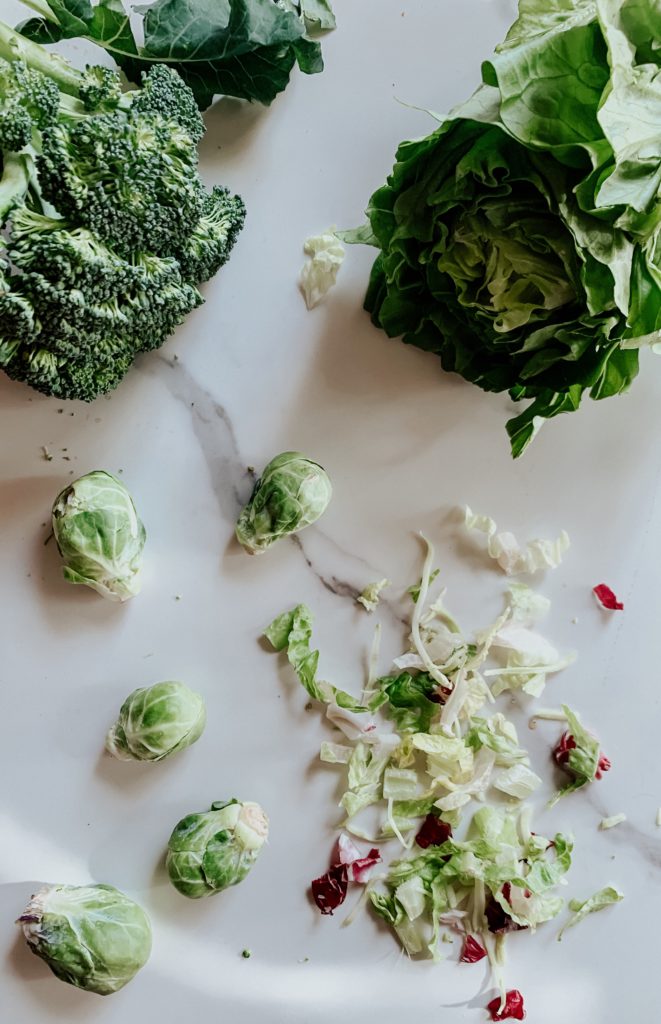
MIXING IT UP WHEN IT COMES TO YOUR GREENS
When it comes to adding greens in your diet sometimes we tend to go for the ones that we are used to only and don’t really get a good mix. It is definitely important to get a good variety for a number a reasons.
1.Nutrition on each green is not created the same: each source of greens doesn’t have the same nutrition as another. You want to get a variety to be sure you are getting all of your essential micronutrients. Also some greens have unique phytonutrients.
I will use kale as an example. Cruciferous vegetables (like kale and broccoli) contain sulforaphane, which has been shown to fight free radicals within the body. These plant compounds may help protect you from cancer and other diseases.
So don’t just eat spinach when kale and dandelion have much higher levels of calcium, iron and protein.
2. Avoiding boredom: When we start to eat the same things over and over we tend to get bored and then fall off the band wagon. Try mixing things up by trying a new green each week that you may have never tried before. If you shop at your local farmers markets and food stores there are plenty of new and exciting choices to make.
3. Think outside of just lettuces and leafy greens: When I say greens I don’t just mean the leafy stuff. Go for other greens like brussels sprouts, broccoli, herbs, asparagus, etc.
This can open up a world of opportunity of making new and exciting dishes. Some of my go to’s for making new things is brussels sprouts, asparagus, bok chuy, and arugula.
4. Different Flavors: Each green has a different flavor than another and may make a dish taste much better with one than the other.
An example is bok chuy is used a lot in asian dishes due to its flavor. Another is arugula known for its spicy, bitter taste which is great to add to salads or on top of a homemade pizza.
5. Know your families:
Cruciferae/Brassicaceae
- Kale
- Arugula
- Cabbage
- Collards
- Radish greens
- Mustard greens
- Bok choy
- Cabbage
- Broccoli
- Brussels sprouts
Amaranthaceae/Chenopodiaceae
- Spinach
- Swiss Chard
- Beet greens
Asteraceae
- Romaine lettuce
- Leaf lettuce
- Endive
- Dandelion
Apiaceae
- Parsley
- Dill
- Cilantro
Try picking something from each family each week to be sure you are reaping the benefits from each of them.
How to make the switch up
Lighter Leafy Veggies
If you like lighter leafy vegetables, try swapping your spinach for some arugula, leaf lettuce, watercress or parsley, or combine a few different greens to get an incredible mixture of vital nutrients that will power you through the rest of your day.
Heartier Greens
If you prefer heartier greens or like to go with seasonal options throughout the colder winter months, look for toothsome leafy vegetables like kale, chard, cabbage or Chinese cabbage, beet greens, or even collards.
Some of the Top Superfoods in the Game
Collards: One of the staple ingredients of the South they have incredible cholesterol lowering benefits especially when you steam them.
Parsley: this little diamond in the rough is known for its significant amount of vitamin K. Vitamin K is good for bone health, cognitive health, and heart health.
Spinach: These leaves are rich in iron. Iron is good for eliminating fatigue, immune system function, and boosting hemoglobin.
Beet Greens: These are normally just thrown away after using the root. You might want to rethink them they pack a lot of fiber. One cup has 5g of fiber!
Chard: These big leaves have at least 13 different polyphenol antioxidants, including anthocyanins, which are anti inflammatory compounds.
Chinese Cabbage: These are rich sources of highly-available calcium and iron, cruciferous vegetables like the cabbage have the powerful ability to “turn off” inflammation markers thought to promote heart disease.
Watercress: This mild tasting and flowery looking green has a ton of beta carotene and vitamin K which are both great for healthy, youthful skin.
How to Sneak them in Your Meals
Smoothies: try making the bulk of your smoothie greens and then add the rest in after.
Salads: try mixing up a few different kinds of lettuces and leafy greens in each of your salads
Pastas: Add in sautéed spinach or kale to your next pasta dish.
Breads and Baked Goods: add in chopped zucchini and other greens to your next round of baked goods.
Sandwich: Don’t get bored with the same romaine lettuces every time you have a burger or sandwich. Make the switch by adding things like spinach, arugula, or watercress.
On Top of Pizza: Make greens a topping on your pizza. I really like arugula for this one but the sky is the limit so get creative.
Sautéed as a Side: Make a mix of sautéed greens like collards, beet, and mustard greens.
Switch your Bun: Start nixing your bun and start using bigger leaf greens to surround your sandwich instead.
Start today by just adding in a least one new green this week to start reaping the benefits from them!
Healthfully Yours,
Krystal Goodman NTP, CPT

